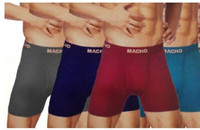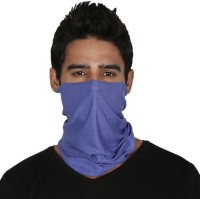Formal Suits Are Dead? How Hybrid Work Ushered In Its Slow Death
The formal suit, once the undisputed king of office wardrobes, is now gathering dust in cupboards across the country. Comfort has staged a quiet revolution. Is this the end of the formal suit as we knew it?
From Suits To Sweatpants: How Hybrid Work Transformed The Modern Work Wardrobe.
There was a time when slipping into a sharply pressed formal suit was part of the daily ritual, much like the morning cup of chai or scanning the headlines before stepping out. From client meetings to boardroom presentations, a blazer and tie signalled authority, respect and ambition. But that was before Zoom calls and home offices changed the way people worked and dressed. Now, as remote work evolves into hybrid models, the question arises: is the formal suit still relevant, or is it becoming an elegant relic of a bygone era?
In the new age of pyjama bottoms below the camera and linen shirts replacing stiff collars, the sartorial shift is loud, even if it's whispered from the comfort of home. What we wear to work no longer demands starch and structure; it demands comfort, authenticity, and a touch of personal flair.
Let's trace the slow but certain demise of the formal suit, and what its downfall says about the modern workplace, identity, and culture.

Suits are out. Hybrid work changed everything, giving formal wear a slow, graceful end and replacing it with something better; Photo Credit: Pexels
1. From Power Dressing To Power Lounging
Once upon a time, a navy blue suit with a crisp white shirt could close deals. Today, that same suit might be struggling to find a reason to leave the hanger. Power dressing has been replaced by power lounging, and not in a bad way.
With hybrid work, the physical office is just one of many places people engage professionally. And when the office shrank with carrying laptop bags, so did the need to dress like one's walking into a courtroom. Enter relaxed silhouettes, breathable fabrics, and a healthy disregard for blazers that weigh as much as a school bag.
The message has shifted too, productivity isn't measured by pleats and pocket squares anymore. It's about output, not outfits. That switch in mindset has quietly reshaped wardrobes across metros and small towns alike. Formality, it turns out, doesn't have to be stiff. It can come in the form of a clean kurta, a smart polo, or even a well-fitted tee, as long as the work gets done.
2. The Pandemic Was the Great Wardrobe Reset
If there's one thing the pandemic did apart from teaching the nation how to bake banana bread, it was this: it gave everyone permission to get comfortable. Locked indoors, the first casualty was the tight waistband. The second? The suit.
No one reached for a three-piece ensemble while scrambling to mute a Teams call with a toddler banging a steel plate in the background. It was about survival, not sartorial statements. As sweatpants and soft tees became workday staples, many realised that they could function, and function well, without being wrapped up in synthetic blends.
Even as offices reopened, the return of the suit was… underwhelming. Like an ex showing up at a party uninvited. It just didn't fit anymore, not physically, but emotionally. People had moved on. They had discovered a new kind of wardrobe freedom, and it didn't involve cufflinks.
Also Read: Why Every Man Needs A Blazer: Even If You Rarely Wear Formal Clothes
3. Comfort Became the New Currency
In a world where one could attend a client pitch while seated cross-legged on a diwan, comfort quietly took centre stage. And this comfort wasn't just about physical ease, it was mental, emotional, even creative.
Gone were the days of adjusting ties in traffic and sweating through shirts during power cuts. Today's hybrid worker craves clothes that breathe, stretch, and stay stain-free through surprise dosa lunches between calls.
And it's not just about being at home. Even in office settings, there's been a visible relaxation. Suits have been replaced by jackets worn over T-shirts, or bandhgalas paired with sneakers. ₹10,000 shoes have been swapped for comfy loafers, sometimes even floaters. It's a shift not born of rebellion, but practicality. After all, who wants to sit through a six-hour meeting in trousers that barely let you breathe?
4. The Rise of Smart-Casual Culture
Once considered an awkward in-between, smart casuals have become the golden standard. Think linen shirts, chinos, Nehru jackets, and even monochrome kurta sets, elegant yet easygoing. This shift isn't just fashion, it's philosophy.
People want to look presentable without feeling imprisoned by fabric. The balance between ease and elegance is being struck not by designers in Milan, but by professionals juggling home WiFi routers and office deadlines.
Tailors are noticing it too. Orders for suits have dipped, while requests for custom-fit semi-formals have shot up. Even weddings, once a suiting-up paradise, are witnessing a tilt toward ethnic wear or Indo-western hybrids. People are no longer dressing to impress a boss. They're dressing for themselves.

The death of the formal suit: A post-pandemic story of shifting office norms and the rise of a new way to work and dress; Photo Credit: Pexels
5. The Suit Still Exists, But It's No Longer a Necessity
Let's be clear: the formal suit hasn't vanished. It's just lost its spot as a default choice. It still holds power, but now it's used sparingly, like saffron in a good biryani, not poured in by the spoonful.
Suits are still worn to key events, high-stakes meetings, or ceremonial occasions. But the daily dependence is gone. It's become more of a costume than a uniform, brought out when needed, not assumed as standard.
This slow dethroning of the suit doesn't spell disrespect. If anything, it reflects a more mature approach to professionalism, one where style is tailored to personality and purpose, not rigid codes. The suit hasn't died. It's retired… gracefully.
6. Retailers Are Changing Their Game Too
Walk into a clothing store today, and you'll see the change stitched into every rack. Where there were once entire aisles of formals, there are now shelves overflowing with “workleisure”, breathable fabrics, stretch trousers, wrinkle-free shirts, and hybrid blazers.
Brands are marketing differently too. Instead of promising “boardroom confidence,” they're focusing on “everyday ease.” Cotton, bamboo fibre, khadi blends, all are getting a fresh lease of life. Even homegrown brands are jumping into the mix, offering collections that promise to be both laptop-camera friendly and lunch-nap approved.
Tailoring, once dominated by strict cuts and firm shoulders, is now softening its edge. The focus is on movement, adaptability, and outfits that can transition from meetings to dinners without fuss. It's a clear nod to a consumer who's evolved, and expects fashion to keep pace.
7. Younger Workforce, Looser Dress Codes
The workforce is getting younger, and it's making its presence felt in wardrobes. For those in their twenties and early thirties, a tie is often more unfamiliar than necessary. These are professionals raised in the era of tech startups, flat hierarchies, and Friday dressing that bleeds into the rest of the week.
Suits, to many in this generation, feel like they belong to their father's wardrobe. This is a crowd that champions authenticity over appearance, comfort over convention. Office culture is catching up too, dress codes are being rewritten, sometimes eliminated altogether. What matters more is contribution, not clothing.
Of course, there's still space for dressing well. But it's about self-expression, not standardisation. That shift has made traditional formal wear feel out of step, not just with fashion, but with the very ethos of the modern workplace.

From corner office to coffee shop, the formal suit is fading away. A hybrid work model is to blame; Photo Credit: Pexels
8. Zoom Culture Changed the Dress Equation Forever
Let's be honest: if a meeting happens on screen, and your bottom half isn't visible, do trousers really matter?
The Zoom era rewired our relationship with clothing. Shirts became the focus, while everything below the desk was fair game. This half-dressed phenomenon wasn't laziness, it was adaptation. It reflected the chaos of home life merging with work, and the quiet flexibility that came with it.
Even after video calls became less frequent, their effect lingered. People became more comfortable being seen in less formal attire. Cameras captured faces, ideas, reactions, not lapels and buttons. The idea of what “professional” looks like has permanently shifted, and the suit wasn't invited to the after-party.
9. Suits and Social Status: The Myth is Fading
There was once a time when walking into a room in a suit commanded immediate respect. It spoke of success, aspiration, and upward mobility. That visual code has blurred now.
Today, someone in jeans and a linen shirt could very well be the CEO. Startups and freelancers have disrupted not just industries, but also appearances. Wealth no longer dresses up, it often dresses down. A ₹500 white tee worn with confidence can now carry more weight than a ₹15,000 suit.
As society shifts focus from appearance to authenticity, symbols of status have changed. The suit isn't a badge anymore. It's a choice, sometimes a nostalgic one, sometimes ceremonial. But never obligatory.
10. What Replaces the Suit? The Future is Fluid
So, if the formal suit is stepping back, what's stepping in?
It's not a single item, it's a mindset. A fluid, adaptive, personal style that blends the best of comfort, culture, and creativity. Maybe it's a soft cotton kurta on a Wednesday, a smart polo on Friday, or a collared shirt that's not tucked in, and no one minds.
Fashion is no longer dictated by a rulebook. It's guided by mood, context, and a sprinkle of confidence. The work wardrobe has become a canvas, not a cage. And that's the real evolution, not the death of the suit, but the birth of freedom.
Products Related To This Article
1. HUMJOLI MENS WEAR Men Blazer And Trouser Solid Suit
2. TURTLE Men 2 Piece Suit Checkered Suit
3. TRULYFEB Men Single Breasted Solid Suit
4. Raymond Men 2 Piece Suit Checkered Suit
5. VAN HEUSEN Men Single Breasted Checkered Suit
6. Allen Solly Men Single Breasted - 2 button Solid Suit
7. PETER ENGLAND Men Single Breasted - 2 button Solid Suit
The formal suit had a good run, dignified, dapper, dependable. But times change, and so do wardrobes. The hybrid work era hasn't just reshaped offices; it's redrawn the lines between work and wear. What we've witnessed isn't a death, but a transformation, from conformity to comfort, from rigid codes to self-expression, but now that formal suits are online, you can buy them easily.
So yes, the suit might rest a little more these days, folded neatly in cupboards across the country. But its spirit lives on, not in structured shoulders or stiff collars, but in every outfit that lets people do their best work while feeling like themselves.
Disclaimer: The images used in this article are for illustration purpose only. They may not be an exact representation of the products, categories and brands listed in this article.













